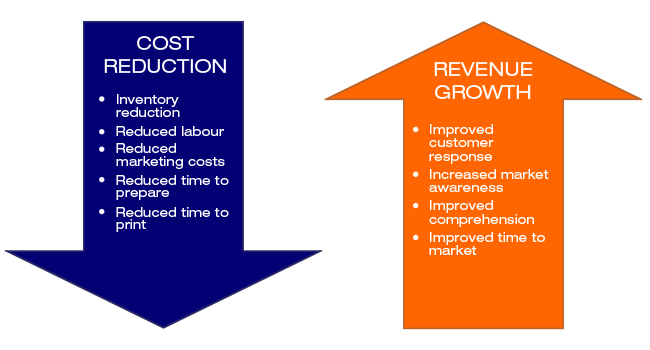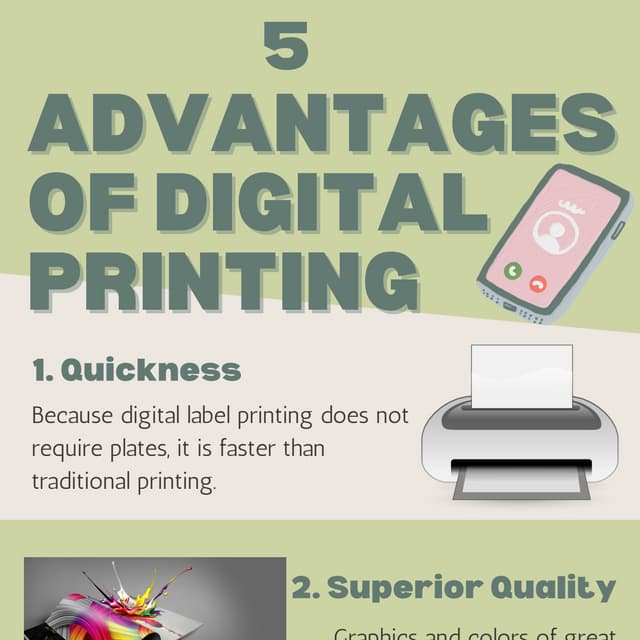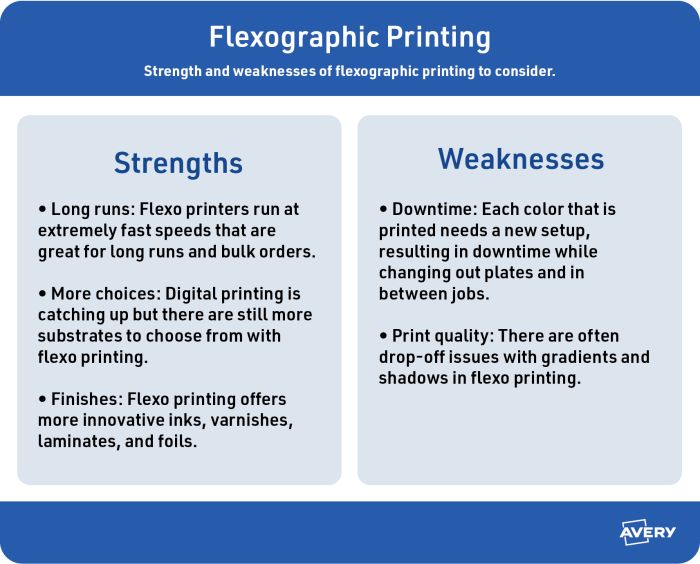All About Digital Printing
Table of ContentsGetting My Digital Printing To WorkTop Guidelines Of Digital PrintingThe Basic Principles Of Digital Printing Some Known Incorrect Statements About Digital Printing More About Digital PrintingThe Facts About Digital Printing UncoveredThe Facts About Digital Printing Uncovered
According to PMMI, electronic printing enables brand names and producers to respond rapidly to consumer demands while improving the supply chain, decreasing warehousing expense and waste, and enjoying faster time to market. That all sounds terrific, however exactly how does this modern technology do all that? The significant differentiator of these modern technologies is that there are no set up costs and no plates with electronic printing.According to Wikipedia, the best distinction between electronic printing and traditional approaches such as lithography, flexography, gravure, or letterpress is that there is no demand to change printing plates in electronic printing, whereas in these analog printing approaches home plates are repeatedly changed. This causes quicker turn-around time and decreases price when making use of electronic printing.

Digital Printing for Dummies
With standard printing approaches, short-run printing is just not possible. Due to the fact that a terrific design can make or damage your product, digital printing consistently produces top quality, clear and vivid graphics each time.
Digital printing is the process of printing digital-based photos directly onto a range of media substrates. There is no requirement for a printing plate, unlike with countered printing. Digital data such as PDFs or desktop computer publishing documents can be sent straight to the electronic printing press to publish on paper, image paper, canvas, material, synthetics, cardstock and various other substrates.
Digital printing is much faster and with the ability of even more detail, two reasons it's often used to publish product packaging, straight advertising and marketing leaflets, and books or magazines. The majority of electronic printing presses have traditionally utilized toner-based technology and as that innovation quickly advanced, the print high quality rivalled that of balanced out presses. In recent times, inkjet technology has simplified electronic print access in addition to the expense, rate and quality obstacles encountering print service providers today.
Some Known Incorrect Statements About Digital Printing
Balanced out printing is the excellent solution when you require and/or versatile colour, paper and sizing choices. Digital Printing. Digital printing is optimal for jobs, typically less than 2,000 copies, and when you require a fast turnaround. So, if you are uncertain what's finest for your job, we will deal with you to pick the print technique finest suited to your project and spending plan.
The accurate shade matching and adaptability it uses make it hard to ignore. Digital printing enables fast and cost-efficient production without endangering high quality, unlike balanced out printing. It enables smaller print runs and on-demand production, making it excellent for companies of all dimensions. In addition, electronic printing, with its outstanding color precision and consistency, is a game-changer in the sector.
While both have their advantages, there are numerous key differences that establish them apart. Recognizing these differences can assist you make an educated decision regarding which approach is best fit for your printing requires. Countered printing has long been the go-to option for high-volume business printing. It involves transferring ink from plates to rubber blankets before ultimately applying it onto the paper.
Some Known Factual Statements About Digital Printing
One remarkable benefit of balanced out printing presses is their capability to deal with a variety of paper dimensions and densities. The balanced out press can suit different materials, including shiny or textured papers, giving versatility that electronic printers might struggle to match. This printing approach relies upon using printing plates to transfer the ink onto the paper, making it a preferred option for premium prints.
The process entails producing plates for every shade utilized in the design, which can be taxing and expensive upfront. Adjustments might be required throughout the print run to preserve quality uniformity with printing machine. Digital printing, on the various other hand, offers a more structured strategy contrasted to offset press. With this approach, ink is applied straight onto the paper without the need for intermediate actions like plate development or rubber coverings.

One significant advantage of electronic printing is the removal of costly configuration costs that are associated with balanced out printing. In typical offset find out printing, each task calls for the creation of plates, which can be expensive and lengthy.
Little Known Questions About Digital Printing.
One more cost-saving element of electronic printing is the capability to publish only what you need. Unlike balanced out printing, where big quantities should be created to make the process economically practical, digital printers offer greater flexibility. Whether you require a tiny set or a solitary duplicate, digital technology enables on-demand printing with no additional prices.
Making use of typical countered printing would require producing a huge amount upfront to accomplish an acceptable device price per flyer. However, by choosing electronic printing instead, they can print just the specific number needed at a lower total cost.: An advertising and marketing firm wishes to run a direct mail project targeting various client sections with tailored brochures.
One of the essential benefits of electronic printing for tiny print runs is its. Unlike balanced out printing, which calls for the production of plates and arrangement time for each task, digital printers can begin creating prints almost immediately. This makes them ideal for smaller sized amounts where time is essential.
Some Ideas on Digital Printing You Should Know
An additional advantage of digital printing is its capacity to create tailored advertising products. With, organizations can quickly include personalized web content within each printed piece. This enables targeted messaging that reverberates with different sectors of their audience. For example, a business running a direct-mail advertising project can customize each postcard or sales brochure based upon recipient preferences or demographics.

One of the crucial advantages is the boosted adaptability and customization options that come with digital printing. With digital printing, making changes to designs or content during the production process is a breeze. Unlike traditional offset printing, where making modifications can be time-consuming and costly, electronic modern technology allows for quick and easy changes.
Another benefit of digital printing additional info is its variable hop over to these guys data capacities. Whether you need to customize each item with private names, addresses, or other one-of-a-kind info, variable data printing makes it feasible.
Digital Printing - An Overview
Whether you're looking for glossy or matte coatings, textured documents, or specialty stocks, electronic printers can accommodate different choices. This flexibility makes certain that your printed products straighten with your brand picture while giving an aesthetically enticing end outcome. Digital printing absolutely radiates. The capacity to change styles or material during production saves time and resources compared to traditional balanced out approaches - Digital Printing.